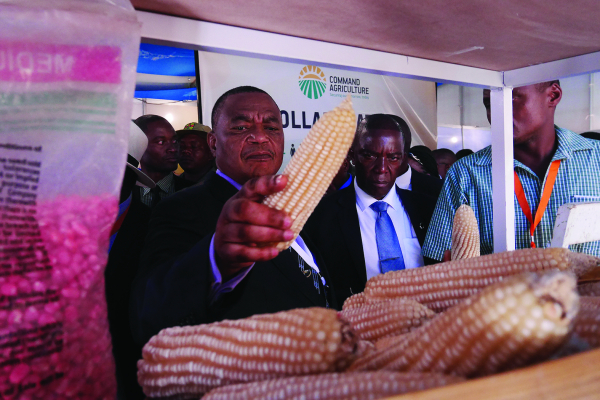
ZIMBABWE’S cereal import requirements for the 2020/21 year are estimated at about 1,1 million tonnes amid concern over the country’s capacity to access offshore supplies at a time it is battling worsening foreign currency shortages, the Food and Agriculture Organisation (FAO) has said.
BY FIDELITY MHLANGA
This quantity mostly comprises maize, estimated at over 750 000 tonnes.
“Due to a second consecutive year with a below average cereal outturn and the low level of domestic stocks, cereal import requirements in the 2020/21 marketing year (April/March) are estimated at about 1,1 million tonnes, more than 50% above the five-year average. This quantity mostly comprises maize grain, estimated at over 750 000 tonnes, nearly double the average,” FAO said in its June 25 Global Information and Early Warning System (GIEWS) report.
The southern African country is experiencing one of its worst economic crises punctuated by runaway inflation, currency depreciation, rapid price increases and foreign currency shortages.
“In addition to the increased import needs, there are concerns regarding the country’s ability to access international supplies given the shortages of foreign exchange reserves and the loss of value of the national currency that has inflated import costs,” FAO said.
It pointed out that food insecurity was expected to worsen from the third quarter of 2020 to early next year due to a decline in cereal production, weakening currency, food price increases and the impact of the COVID-19 pandemic.
FAO said the aggregate total cereal production was forecast at 1,2 million tonnes in 2020, 15% below the five-year average, but above the low level of 2019 when production was severely affected by extreme weather events, including drought and Cyclone Idai.
- Chamisa under fire over US$120K donation
- Mavhunga puts DeMbare into Chibuku quarterfinals
- Pension funds bet on Cabora Bassa oilfields
- Councils defy govt fire tender directive
Keep Reading
Zimbabwe has a national cereal requirement of 2 227 782 tonnes for human and livestock consumption.
Production of maize is estimated at about 910 000 tonnes in 2020, about 25% below the five-year average although higher than the previous year’s low level. Outputs of sorghum and millet are estimated at 103 700 tonnes and 49 000 tonnes, respectively.
Wheat production, according to agricultural experts, is envisaged at 200 000 tonnes if farmers manage to harvest five tonnes per hectare from the planted 41 000 hectares nationwide.
“Considering the negative effects of the COVID-19 pandemic and the associated containment measures, the prevalence of food insecurity is expected to increase from the third quarter of 2020 to early 2021,” FAO said.
Prior to the outbreak of the COVID-19, the number of people assessed to be food-insecure in the February-June 2020 period was estimated at about 4,34 million, GIEWS accounting for 45% of the rural population, according to the latest integrated food security phase classification (IPC) analysis released in March 2020.
The high levels of food-insecurity were mostly the result of reduced availability of grains and the high food prices that severely constrained access to food.
“Shocks on both the demand side (reduced household incomes due to an expected economic contraction) and on the supply side (logistical bottlenecks hindering the normal flow of food commodities) are expected to curtail the households’ access to food. In addition, although there was a small upturn in the cereal harvest, production in 2020 remains below average and consequently farm-derived incomes are also likely to remain below average.”
In addition, FAO said there was also a decline in tobacco production, a key cash crop for farming households and an important export commodity. This output decline is foreseen to further reduce income-generating opportunities from crop sales and lower export earnings for the country as a whole.
In April 2020, the government launched a US$2,2 billion humanitarian appeal of which US$956 million was intended for food security programmes.











